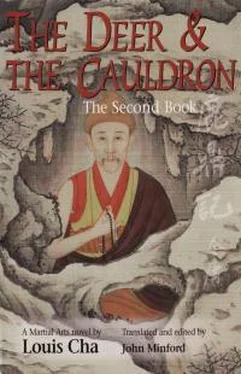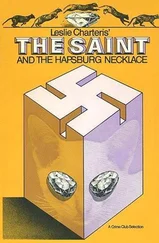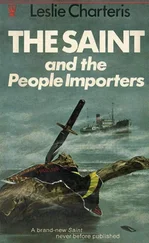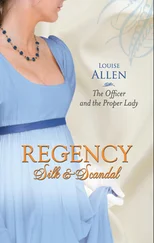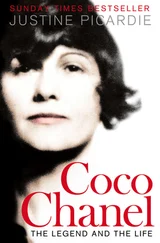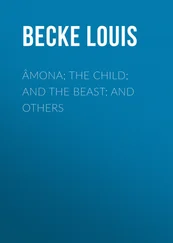I hope Trinket’s antics in this volume will entertain. For all his faults, he remains, in my opinion, along with Monkey, Jia Baoyu, and Ah Q, one of the unforgettable characters in Chinese fiction. He is the heart of the book. That is why, although this third volume (like the second) is abridged from the Chinese original (it represents volumes 4 and 5 of the Chinese edition), it has been my goal throughout to preserve as much as possible of Trinket himself, his words and deeds, his (often obnoxious) personality, his feelings (or lack of them).
My Shifu David Hawkes has once again gallantly contributed his kungfu skills to the completion of this saga. And my ever’loyal sister’in’arms, Rachel May, has in this volume gone far beyond the call of editorial duty. Without her creative collaboration and ingenuity, the book would quite simply never have been finished.
Fontmarty, August 2002
IMPORTANT DATES IN THE HISTORICAL BACKQROUND
To the extent that Deer (‘s a historical novel, the action takes place between roughly 1663 and 1689
1559 Birth in the North’Eastern Long White Mountains of Nurhachi, the Exalted Founder of the Manchu Imperial House of Gioro, descended from a noble family of the Jurched Tartars (rulers of China in the twelfth and thirteenth centuries, during the Jin or Golden dynasty).
1592 Birth of Abahai, eighth son of Nurhachi.
1572’1620 Reign of the Ming Emperor Wan Li; beginnings of the Ming (Bright) dynastic decline.
1616 Nurhachi declares himself Khan or First Emperor of the Later Jin dynasty and presides over a growing Manchu state in the North’East.
1626 Death of Nurhachi, who is succeeded by Abahai, the Illustrious Ancestor.
1628 Accession of Chong Zhen, grandson of Wan Li, and last Emperor of the native (Han) Ming dynasty.
1629 Patriotic Ming general Mao Wenlong (in Deer he is the father of the Old Whore, Mao Dongzhu) is treacherously executed in his island fortress by Marshal Yuan Chonghuan (the father of Cha’s fictitious and legendary swordsman Yuan Chengzhi).
1630 Yuan Chonghuan himself is executed, on charges trumped up by partisans of the corrupt eunuch Wei Zhongxian.
1636 Rise of rebel movements in northern and central China, including that led by Li Zicheng (General Bash’em); Abahai proclaims himself Emperor of the Qing dynasty, in the Manchu capital Mukden (present’day Shenyang).
IMPORTANT DATES IN THE HISTORICAL BACKQROUND
XIII
1638 Birth of Fulin (later to be the Emperor Shun Zhi), fourth son of Abahai. 1644 Rebel leader Li Zicheng enters Peking; the Emperor Chong Zhen commits suicide; the Manchu army enters Peking, aided by the turncoat Satrap Wu and his force of Chinese troops; beginning of the Manchu Qing dynasty proper in China and of the reign of Shun Zhi. 1645 Massacre of Yangzhou. 1646’1647 Manchu conquerors try to consolidate their hold over central and southern China; Ming Princes (Pretenders) establish short’lived refugee courts in the South. 1654 Birth of Xuanye (later to be Emperor Kang Xi), second son of the Emperor Shun Zhi. 1659 Coxinga, leader of the anti’Manchu resistance, tries to take Nanking but fails. 1661 Death of Empress Donggo, the Emperor Shun Zhi’s favourite consort; also supposed death of Emperor Shun Zhi. 1662 Accession of Kang Xi. Ming Pretender Prince Gui (Emperor Yong Li) is taken prisoner in Burma and strangled in Kunming, with the connivance of Satrap Wu. Coxinga moves his base to Taiwan. Death of Coxinga; formation, under Coxinga’s general, Helmsman Chen Jinnan, of the Triad Secret Society, committed to the overthrow of the Manchus and the restoration of the Ming Imperial House. 1662’1663 Inquisition surrounding the Ming History. 1663’1664 Dutch fleet helps Manchus drive Coxinga’s son Zheng Jing from Fujian to Taiwan; Manchu rule is established throughout mainland China. 1667 Kang Xi, aged thirteen, dismisses his Regents. 1669 Death of Oboi, formerly Chief Regent. XIV
1673 Rebellion of Satrap Wu (Yunnan and Guizhou Provinces), Shang Zhixin (Guangdong Province), and Geng Jingzhong (Fujian Province)-the Three Feudatories.
1678 Dzungar Prince Galdan invades Eastern Turkestan, taking Kashgar and Yarkand, then (1679) Kami and Turfan.
1681 Three Feudatories are finally put down; death of Zheng Jing.
1682 Death of Fifth Dalai Lama. The Grand Lama Sangge seizes power, and supports Galdan’s territorial expansion.
1683 Surrender of the Pescadores Islands; Manchus finally conquer Taiwan.
1686 Kang Xi calls unsuccessful conference of Mongols and Tibetans.
1689 Treaty of Nerchinsk signed between Manchus and Russians, defining their border.
1690 War finally breaks out between Galdan and the Manchus.
1696 Galdan is defeated by Kang Xi’s army at the battle of Jao Modo.
For an excellent, readable account of the historical background to , see the first three chapters of Jonathan Spence’s book, The Search for Modern China (New York’ Norton, 1990). A colourful earlier account of this period is to be found in Backhouse and Bland, Annals and Memoirs of the Court of Peking (London’ Heinemann, 1914), chapters 1’10.
QLOSSARY OF PEOPLE AND PLACES
Where historical dates are given, they are based on Hummel, Eminent Chinese of the Ch’ing Period (Washington, i 94 4)
Ah (as in Ah Ki) An affectionate diminutive. AH KI see Blue Girl AH KOR see Green Girl AJIGE Commander of the Vanguard Regiment, until replaced by Colonel Tai. These crack troops were always feuding with Dolong’s Valiants (shades of the King’s Musketeers and the Cardinal’s Guards in Dumas’ The Three Musketeers, a work Louis Cha greatly admires). ALEXIUS MIKHAILOVICH Second Tsar of the Romanov dynasty, reigned 1645’1676. See Sophia, Princess. AMOY Important port; headquarters of Coxinga in southern Fujian Province. AN FU GARDENS Literally, Park of Peaceful Prosperity. This was one of the Satrap’s extravagant pleasure gardens, put at the disposal of Princess Ning during her stay in Kunming. Situated in the western suburbs of the city, it is said (historically) to have housed his large library. AO BIAO The Blue Tiger. One of the Mu Family retainers, the much tattooed disciple of Shaker Wu. BASH’EM, General Li Zicheng (1605’1645), rebel leader who drove the last of the Ming Emperors from Peking in 1644, only to be ejected in his turn by Satrap Wu and the Manchus. His subsequent fate is unknown. One legend says that he did not die in 1645, but escaped to a monastery. BA LANGXING Officer in Satrap Wu’s army. XVI
BATAI, Lord Grand Chancellor of the Hall of Middle Harmony, an elderly Manchu statesman, simultaneously holding the post of Minister of the Board of Rites.
BLUE DRAGON MARSHAL Xu Xueting; elder of Mystic Dragon Sect.
BLUE GIRL Wang Ah Ki, twenty’year’old disciple of the White Nun, in love with Prince Galdan.
BODONICH, Prince Leader of delegation of ministers and dignitaries sent to negotiate with Princess Sophia, after the mutiny.
BRONZE HAT LANE Alley in central Peking, location of Trinket’s palace.
CHANG, Princess see White Nun CHEN YUANYUAN see Peerless Consort
CHIRONOV One of the musketeers sent to guard Princess Sophia in the hunting lodge outside Moscow; later promoted to Captain and sent east to Fort Albazin, with Vobolsky.
CHONG ZHEN, Emperor (1611’1644) Zhu Youjian, last Emperor of the Ming dynasty, who succeeded to the throne in 1627, aged sixteen, inheriting an empire too poor to stand the expense of maintaining the armies needed at the front. Wholesale desertion and banditry plagued his reign, and indecision and lack of confidence prevented the formation of a strong government. In 1629, his loyal general Yuan Chonghuan (one of the last hopes for the survival of the Ming in the face of the growing Manchu threat) was unjustly put to death. This was followed by the ever’increasing encroachment of the Manchus from the north’east, while from 1630 onwards China was ravaged by desperate hordes of bandits. Chong Zhen hanged himself on Coal Hill when the rebel leader Li Zicheng entered Peking.
Читать дальше
